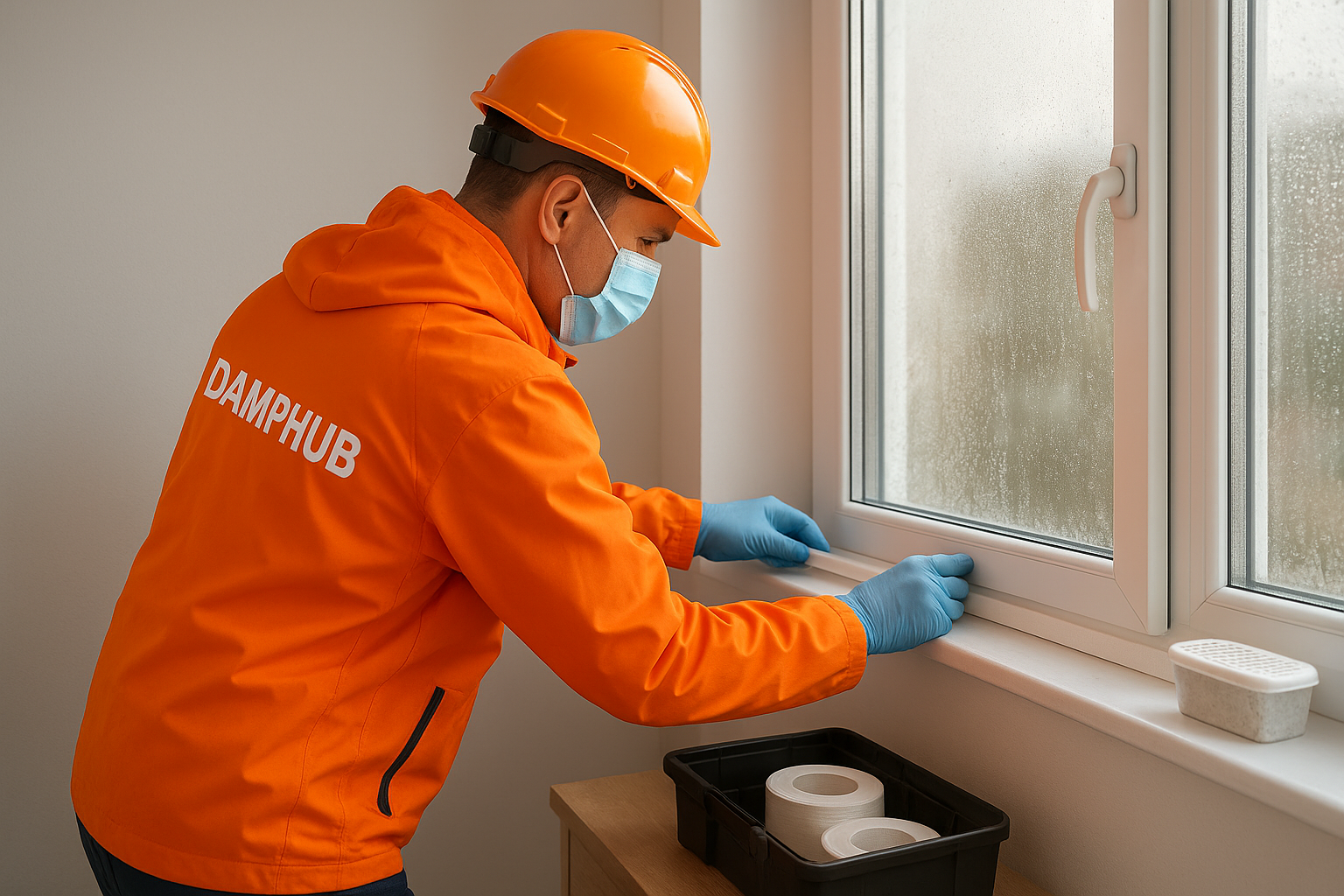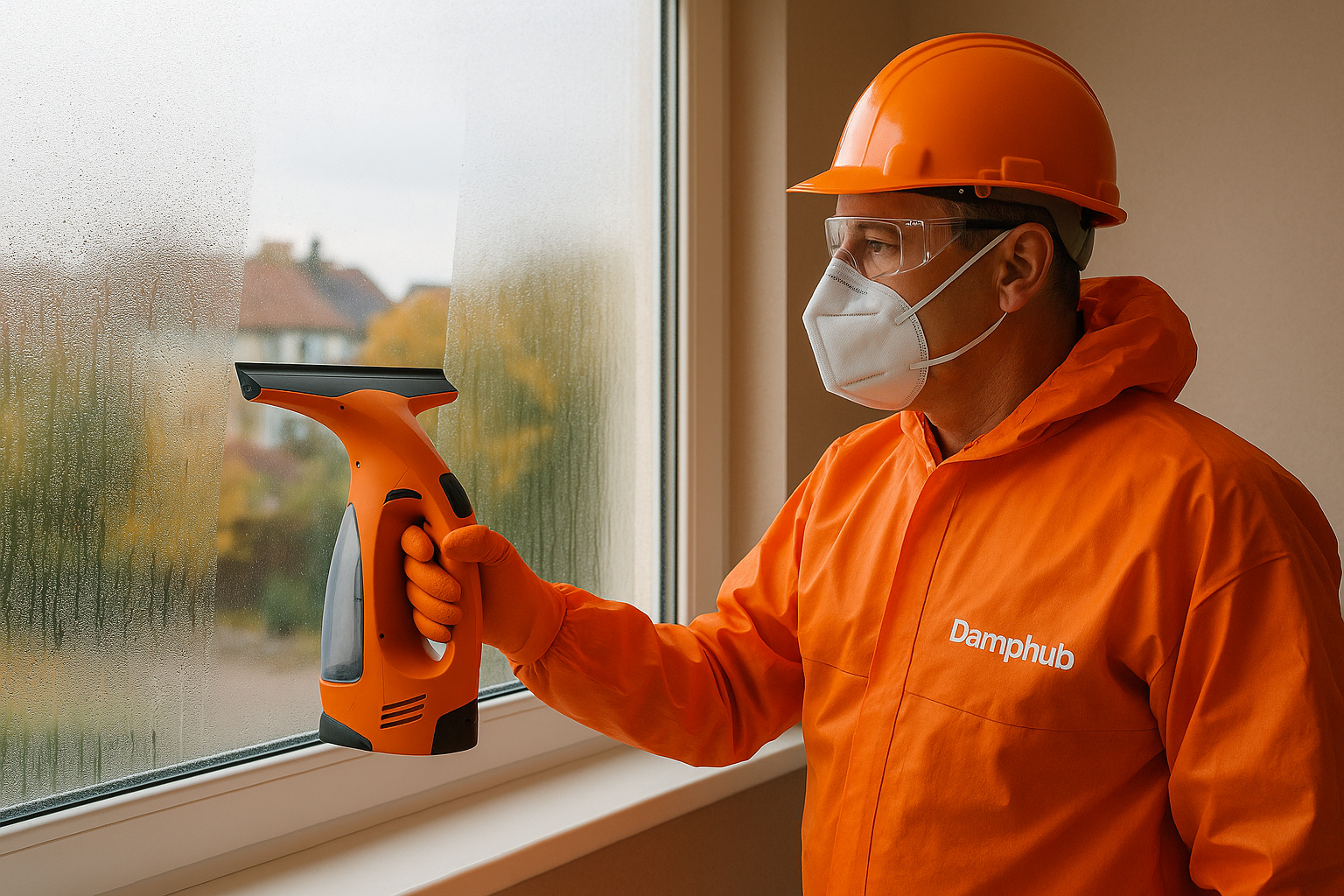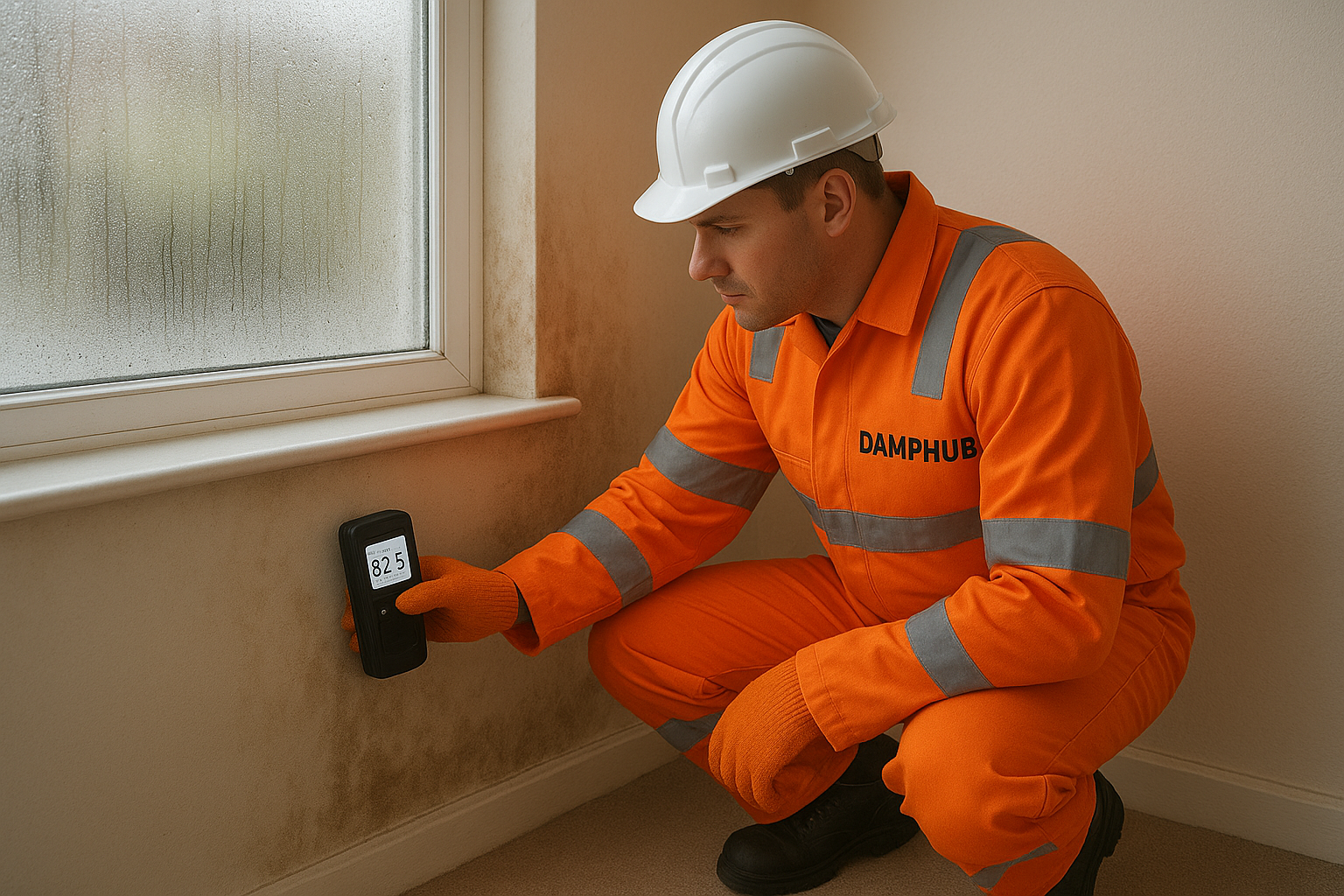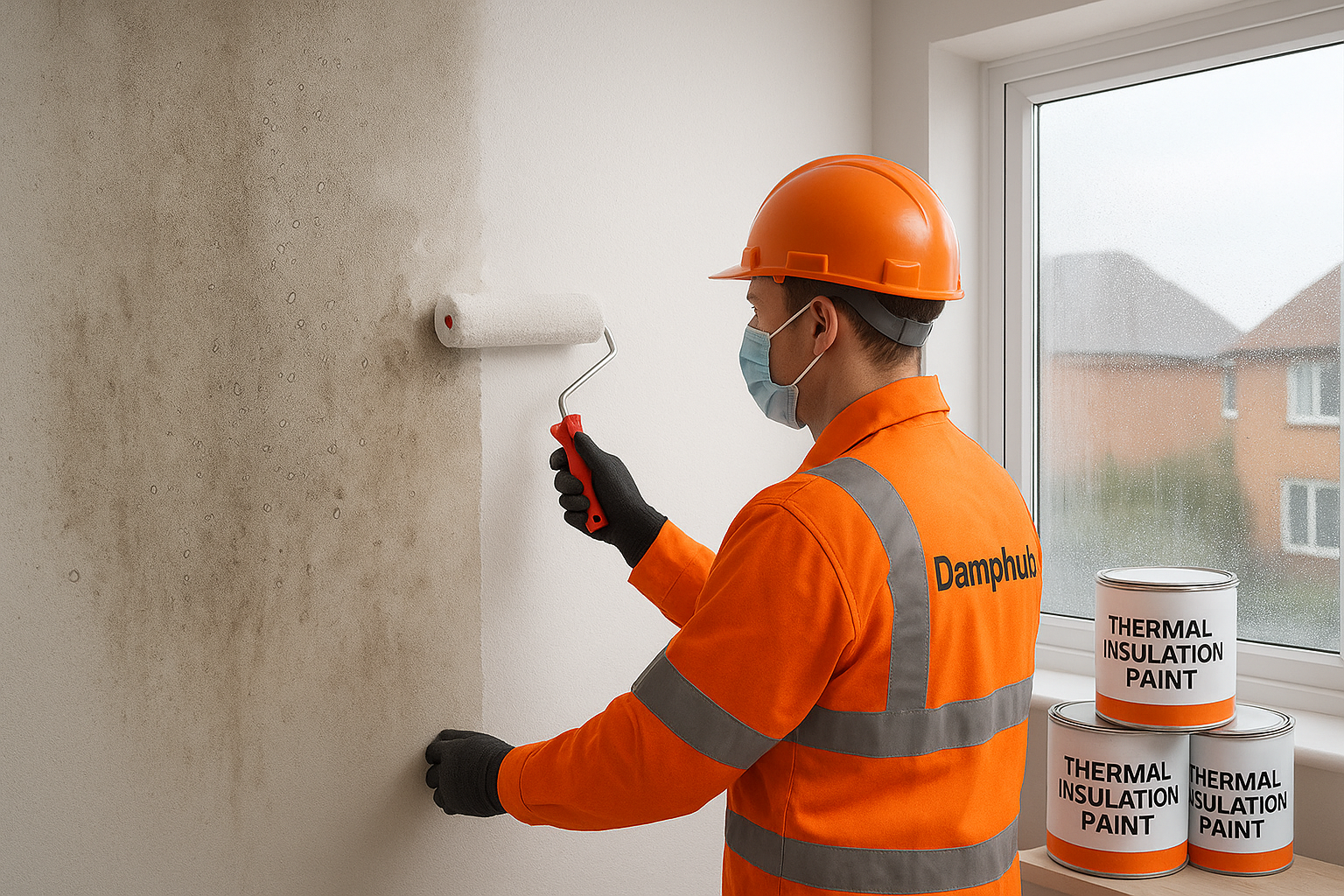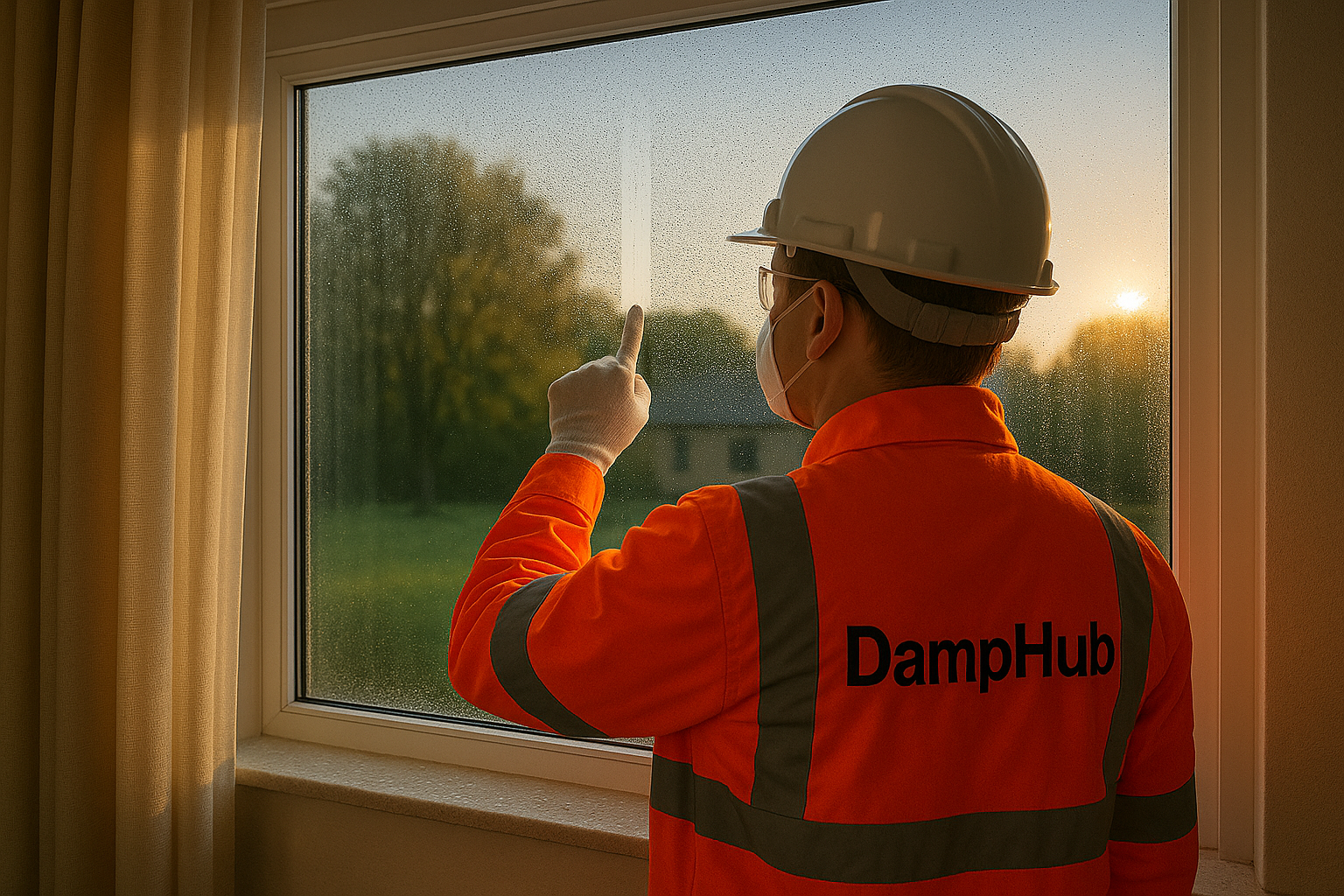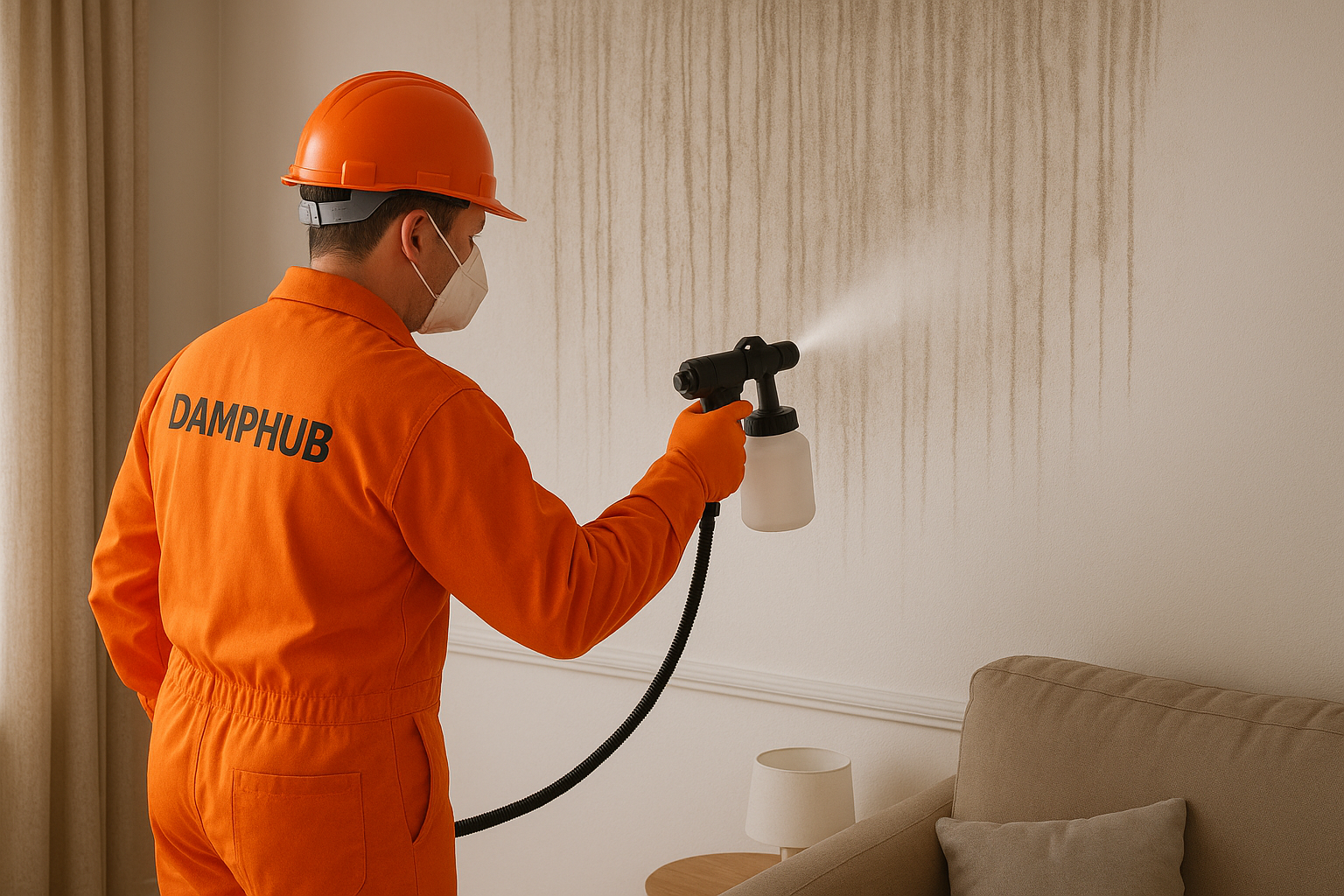
Condensation is as much a part of British winters as cold tea and squeaky radiators. But while many shrug it off as “just a bit of moisture”, the truth is that it can lead to rotting woodwork, peeling wallpaper, unhealthy air, and costly repairs if you don’t keep it under control.
The good news? You don’t need to live with it forever. With the right strategies, you can cut condensation down dramatically — and in some homes, stop it altogether. Below, we’ll walk through seven proven methods that really work, from quick wins you can try tonight to long-term fixes that future-proof your house.
Why Condensation Happens in the First Place
Before tackling how to stop condensation, it’s important to understand why it forms. Moisture is always present in the air we breathe, generated through everyday activities such as cooking, washing, showering, drying clothes, and even from pets and houseplants.
In fact, according to the City of London condensation booklet, an average family of four can add up to 20 pints of water vapour a day into their indoor air without even realising it.
When that warm, moisture-laden air hits a cold surface (like glass or poorly insulated walls), the air suddenly can’t hold as much water. The excess moisture condenses into droplets, and boom: you’ve got wet windows, damp walls, and the beginnings of a mould problem.
The challenge isn’t to remove every drop of moisture (that’s impossible), but to manage it so it doesn’t build up where it shouldn’t.
More from us you may want to read: How to Stop Condensation on Windows. A Full UK Home Guide
Method 1: Improve Ventilation
If you take nothing else away from this article, take this: fresh air is your best weapon against condensation. The more stale, humid air you can get out, the less chance it has to settle on cold surfaces.
- Trickle vents and latches. Many modern windows come with small vents built in at the top. Keep them open, even in winter, to allow a steady flow of fresh air. If your windows have a latch position, leave them on it at night — it lets air out without compromising security.
- Extractor fans. Kitchens and bathrooms produce the most moisture. Make sure extractor fans are working properly and run them during and after cooking or showering. A decent fan should continue running for 15–20 minutes after the steam clears.
- Cross-ventilation. Crack open windows at opposite ends of the house for 5–10 minutes a day to create a breeze that sweeps humid air out quickly.

Good To Know
Leaving a bathroom door open after a hot shower can spread steam into the whole house in seconds. Keep it closed until the extractor has done its job.
Method 2: Control Indoor Humidity
You can’t see it, but the amount of water vapour floating in your air makes or breaks the battle against condensation. Ideally, indoor humidity should sit between 40% and 60%. Above that, condensation and mould thrive.
- Dehumidifiers. A quality dehumidifier can pull litres of water from the air daily. Look for one with a “laundry mode” if you often dry clothes indoors, or a quiet eco setting for bedrooms at night.
- Dry clothes smartly. Avoid drying laundry on radiators. Instead, hang it in a room with an open window or a dehumidifier running. Heated airers with covers also work well.
- Mind the plants. Indoor jungles may look great on Instagram, but clusters of plants add extra humidity. Spread them out or move a few to better-ventilated rooms.
- Cover pans while cooking. It’s a small habit shift, but it prevents a surprising amount of steam from filling the kitchen.
Pro Tip
Stick a cheap digital hygrometer in each room. They cost under a tenner online and show your humidity in real time, so you know exactly when things are getting too damp.
Method 3: Keep Consistent Heating
One of the biggest causes of condensation is sudden temperature swings. If your house is freezing all day and then you crank the heating up for a few hours in the evening, warm air will instantly hit cold walls and glass, and condensation appears.
Instead, aim for a steady background temperature:
- Keep heating on low throughout the day, especially in rooms that tend to get damp.
- Avoid turning radiators off completely in little-used rooms. Cold spots spread moisture problems quickly.
- Use thermostatic radiator valves to balance heat across the house without wasting energy.
- Consider a smart thermostat. These learn your routines and keep your home steady without wasting heat.
Think of it as teaching your home to “breathe steadily” rather than gasp in bursts.
We also covered a room-specific guide: Condensation In Bedroom: Here’s Why and How to Fix it Once
Method 4: Insulate and Upgrade Windows
Cold surfaces are condensation magnets. The colder your walls and windows, the quicker moisture will settle. Improving insulation doesn’t just save on bills — it cuts condensation dramatically.
- Double or triple glazing. A permanent fix. The inner glass pane stays warmer, so water vapour is less likely to condense on it.
- Secondary glazing. A cheaper retrofit option if you can’t afford new windows just yet.
- Insulation film. Clear plastic film kits can be applied in winter to create a thin barrier that keeps glass warmer.
- Wall insulation. External or internal wall insulation makes a big difference in older solid-wall homes.

Method 5: Manage Moisture at the Source
Prevention beats cure. Target the everyday activities that pump the most moisture into your home.
- Showers and baths. Use extractor fans, keep the bathroom door closed, and wipe down tiles after use.
- Cooking. Always use lids on pots and keep extractor hoods running.
- Kettles. Position kettles away from windows and walls to stop repeated steam exposure in one spot.
- Pets. Aquariums and large pet enclosures can raise humidity — make sure they’re well ventilated.
Try This
After showering, turn on the cold tap for a few seconds to flush out leftover steam from the pipes. It sounds odd, but it can noticeably cut the amount of vapour released into your bathroom.
Method 6: Wipe and Maintain Daily
Even with the best efforts, a little condensation may still appear. What matters is stopping it from sitting there long enough to cause damage.
- Morning wipe-downs. Keep a window vacuum or microfiber cloth handy to quickly clear droplets from glass and frames each morning.
- Dry the sills. Pay extra attention to wooden window frames, which rot if left damp.
- Check for mould. Spot-clean with vinegar or specialist sprays if you see black specks forming.
Think of this like brushing your teeth — a daily habit that prevents much bigger problems later.
Still looking for room-specific guides? Our other post may be useful: Condensation in Loft: Causes, Fixes & Prevention
Method 7: Invest in Long-Term Solutions
If condensation is a constant battle, it may be a sign your home needs deeper fixes.
- Positive Input Ventilation (PIV). These units gently push fresh, filtered air into your home from the loft, forcing stale, humid air out. They’re popular in older UK homes and can transform air quality.
- Heat recovery systems. Mechanical Ventilation with Heat Recovery (MVHR) units replace stale air with fresh air while keeping most of the heat. More expensive, but very effective.
- Professional survey. If you’ve tried everything and still struggle, a damp survey can uncover hidden structural issues causing excess moisture.
Pulling It All Together
Stopping condensation altogether is about balance. You don’t want to turn your house into a draughty wind tunnel, but you can’t let warm, wet air build up unchecked either. By improving ventilation, keeping humidity in check, steadying your heating, and insulating cold spots, you’ll notice a dramatic reduction in wet windows and damp walls.
For some, a couple of tweaks — like running a dehumidifier and keeping bathroom doors shut — are enough. For others, especially in older properties, bigger upgrades like double glazing or a PIV unit may be the long-term answer.
What matters is consistency. Once you adopt these methods, they quickly become second nature, and instead of waking up to soggy sills and peeling paint, you’ll have dry windows and a healthier, warmer home.
FAQs About How to Stop Condensation Altogether

-
Does vinegar stop condensation?
No. Vinegar is great for cleaning mould caused by condensation, but it won’t stop water from forming on glass.
-
Will a dehumidifier fix condensation permanently?
It’s one of the best tools, but it only works while it’s running. Pair it with ventilation and steady heating for lasting results.
-
Why do I only get condensation in winter?
Because cold outdoor temperatures make indoor surfaces (like glass and walls) much colder, giving moisture somewhere to condense.
-
Is condensation the same as damp?
Not exactly. Condensation is water droplets forming on cold surfaces, while damp can also come from leaks or rising groundwater.
-
How can I tell if my condensation problem is serious?
Look for recurring mould, peeling wallpaper, musty smells, or black patches around windows. These are signs you need more than just daily wipe-downs.
-
Do curtains or blinds make condensation worse?
They can. Closed curtains trap warm air against cold glass, making condensation more likely. Leaving them slightly open at night helps.
-
Can insulation increase condensation?
Yes — if you insulate walls and windows but don’t improve ventilation, the trapped moisture has nowhere to go.
-
Is it safe to leave windows open overnight?
It depends on your area and security needs. If possible, use trickle vents or latch settings instead of fully open windows.
Final Thoughts
Condensation may be part of the British winter, but it doesn’t have to be a permanent guest in your home. With the seven proven methods above, you can learn how to stop condensation altogether in practical terms — not by chasing away every drop of moisture, but by keeping it under control so it never becomes a problem.
A home free of misted windows, damp corners, and peeling paint is healthier, warmer, and far more comfortable to live in. With small daily habits and a few smart upgrades, you’ll get there.

